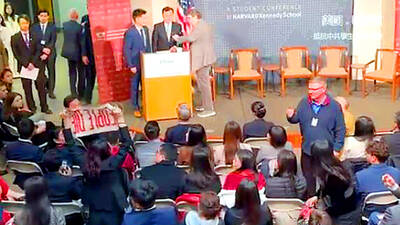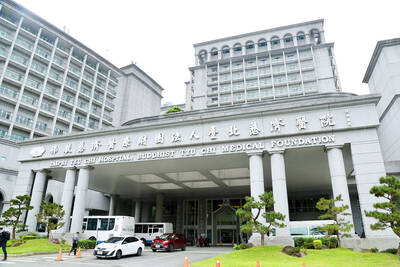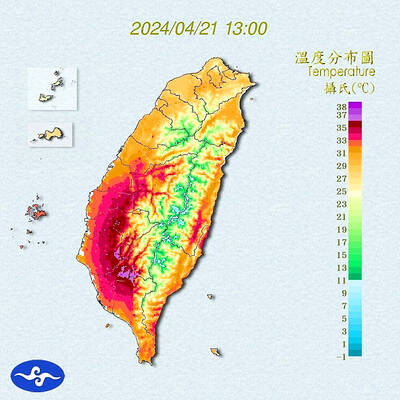Holding Martial Law-era informants accountable is the next challenge for transitional justice, and requires careful investigation and reflection to avoid a “witch hunt” on one extreme and “whitewashing” on the other, the Transitional Justice Commission said yesterday.
The topic has resurfaced following a report by the Liberty Times (sister newspaper of the Taipei Times) on Saturday revealing that Democratic Progressive Party (DPP) Legislator Huang Kuo-shu (黃國書) had served as an informant for the authoritarian Chinese Nationalist Party (KMT) government while he was a student in the 1980s.
Huang yesterday admitted to being an informant and said he would resign from the DPP when his term ends, vowing not to seek re-election.
The commission said Huang’s case was the inevitable result of a highly systematized surveillance system perfected over decades of martial law.
An informant is merely the tail end of this extensive surveillance apparatus, it said, adding that identifying individuals and holding them accountable would require a sounder legal basis.
Unearthing and using surveillance files are the newest challenge to transitional justice, the commission said.
Apart from striking the right balance between privacy and seeking the truth, comparing subjective comments from informants with files and witness testimony is a lengthy and complicated process, it added.
Through this process, “we can deepen our understanding of and reflect on this system,” the commission said, adding that a discussion can thereafter begin on responsibility.
“This is a serious democratic undertaking,” it said. “If we are not careful, it could become a witch hunt or whitewash the situation.”
Surveillance by the KMT government was still widespread during the final years of martial law, the commission said in a report in April last year.
More than 30,000 informants were groomed by intelligence agencies during the 1980s, casting an extensive net of surveillance throughout society, National Taiwan University researchers found.
A Ministry of Justice Investigation Bureau handbook from 1981 stated that the goal of the informant program was to “obtain comprehensive information on security and criminal activity in society,” they found.
Depending on the population and conditions in each region, one informant was groomed for every 500, 600 or 700 people, for a total of about 30,000 nationwide, the report said.
About 40 percent were in local administrative offices, while the remaining 60 percent were “evenly distributed throughout societal organizations at all levels,” it said.
All instruction was given top-down and contact was made at least once per month for average informants, who were not regularly compensated, the researchers found.
Internal or undercover informants were paid NT$1,000 to NT$20,000 per month and were in constant contact with their handlers, they added.
Universities were a focus for surveillance, with about 1,000 informants stationed on campuses across Taiwan, the report said, adding that student groups, religious organizations, opposition magazines and overseas academics were also of primary interest.
Officers targeted people who had expressed anti-government views, but not to an extent requiring suppression, to control them and minimize threats, the report said.

A group of Taiwanese-American and Tibetan-American students at Harvard University on Saturday disrupted Chinese Ambassador to the US Xie Feng’s (謝鋒) speech at the school, accusing him of being responsible for numerous human rights violations. Four students — two Taiwanese Americans and two from Tibet — held up banners inside a conference hall where Xie was delivering a speech at the opening ceremony of the Harvard Kennedy School China Conference 2024. In a video clip provided by the Coalition of Students Resisting the CCP (Chinese Communist Party), Taiwanese-American Cosette Wu (吳亭樺) and Tibetan-American Tsering Yangchen are seen holding banners that together read:

UNAWARE: Many people sit for long hours every day and eat unhealthy foods, putting them at greater risk of developing one of the ‘three highs,’ an expert said More than 30 percent of adults aged 40 or older who underwent a government-funded health exam were unaware they had at least one of the “three highs” — high blood pressure, high blood lipids or high blood sugar, the Health Promotion Administration (HPA) said yesterday. Among adults aged 40 or older who said they did not have any of the “three highs” before taking the health exam, more than 30 percent were found to have at least one of them, Adult Preventive Health Examination Service data from 2022 showed. People with long-term medical conditions such as hypertension or diabetes usually do not

POLICE INVESTIGATING: A man said he quit his job as a nurse at Taipei Tzu Chi Hospital as he had been ‘disgusted’ by the behavior of his colleagues A man yesterday morning wrote online that he had witnessed nurses taking photographs and touching anesthetized patients inappropriately in Taipei Tzu Chi Hospital’s operating theaters. The man surnamed Huang (黃) wrote on the Professional Technology Temple bulletin board that during his six-month stint as a nurse at the hospital, he had seen nurses taking pictures of patients, including of their private parts, after they were anesthetized. Some nurses had also touched patients inappropriately and children were among those photographed, he said. Huang said this “disgusted” him “so much” that “he felt the need to reveal these unethical acts in the operating theater

Heat advisories were in effect for nine administrative regions yesterday afternoon as warm southwesterly winds pushed temperatures above 38°C in parts of southern Taiwan, the Central Weather Administration (CWA) said. As of 3:30pm yesterday, Tainan’s Yujing District (玉井) had recorded the day’s highest temperature of 39.7°C, though the measurement will not be included in Taiwan’s official heat records since Yujing is an automatic rather than manually operated weather station, the CWA said. Highs recorded in other areas were 38.7°C in Kaohsiung’s Neimen District (內門), 38.2°C in Chiayi City and 38.1°C in Pingtung’s Sandimen Township (三地門), CWA data showed. The spell of scorching